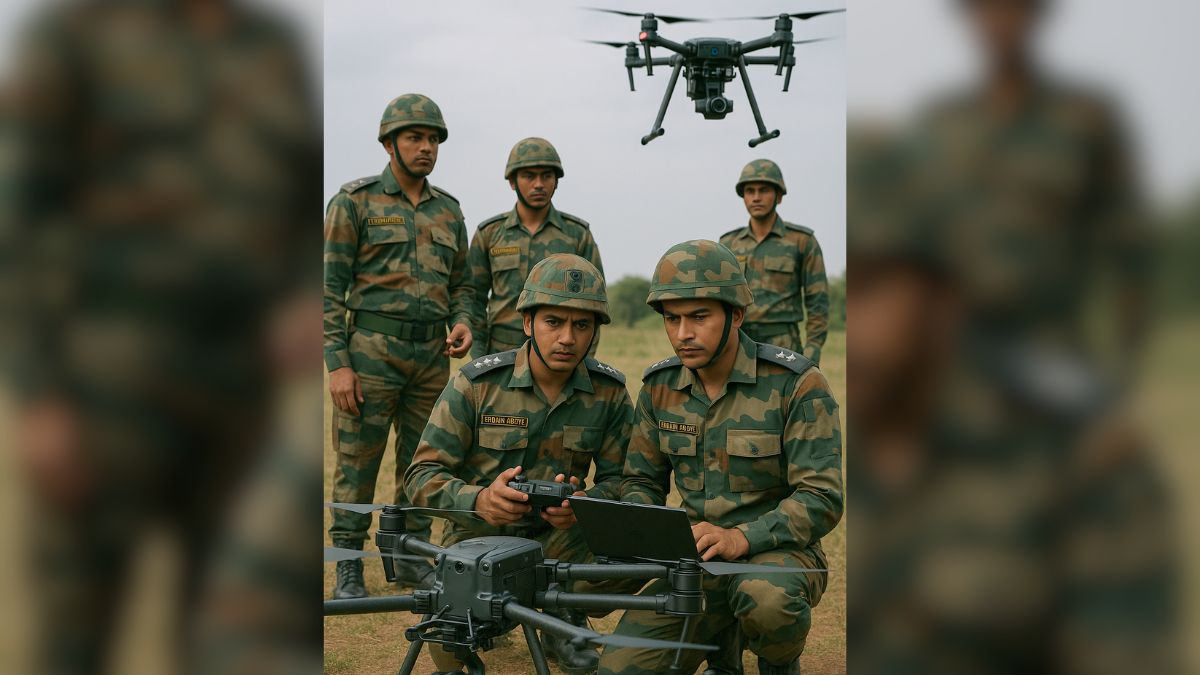Anyone who follows geopolitics would vouch that drones are a key component in the future warfare, which is not just playing a crucial role right now but its job is only going to go up in the future. In view of this, the Indian Army last month announced that 380 infantry battalions have been equipped with drone platoons – Ashni.
Taking another significant leap towards modernising India’s ground warfare capabilities, the Indian Army’s tank and mechanised infantry regiments are set to integrate unmanned aircraft systems (UAS), or drones, into their operational framework. These advanced aerial systems are poised to transform how Indian forces operate on the battlefield.
They will not only offer unparalleled strategic advantages in reconnaissance, surveillance, but also equip the Army troops with precision strikes.
Why there is a growing dependence on drones?
Drones have rapidly emerged as a cornerstone of modern military strategy, playing a pivotal role in recent conflicts around the world. Their operational success in Operation Sindoor, Armenia-Azerbaijan conflict, along with their widespread use by Russia and Ukraine, underscores their growing importance on the global stage.
Now, the Indian Army is looking to harness the full potential of unmanned aerial systems to bolster the effectiveness of its mechanised units, adding a new dimension to its already formidable fighting capabilities, according to a Times Now report.
The integration of drones into the Indian Army’s tank and mechanized infantry regiments will provide crucial “extended reach” for operational commanders. According to high-level defense sources, cited by Times now, UAVs will enable units to monitor enemy movements up to 40–50 kilometers ahead of their position, providing an invaluable edge in intelligence gathering and threat identification.
This enhanced situational awareness is expected to significantly improve decision-making on the ground and ensure that Indian forces stay one step ahead of potential adversaries.
Surveillance, real-time intelligence: Can drones offer strategic edge?
For India’s 65+ tank regiments and more than 50 mechanizsed infantry regiments, drones will be a game-changer in terms of operational reach and battlefield awareness. With the ability to identify threats well beyond their immediate line of sight, these regiments will gain vital intelligence on enemy positions, terrain features, and logistical movements.
In a complex, multi-domain battlefield, having real-time intelligence delivered via drone surveillance can enable commanders to make tactical adjustments in the moment, improving operational success rates and minimizing casualties. Additionally, drones will serve as force multipliers.
A new skill set for Indian soldiers
As part of the integration process, about 30 soldiers from each tank and mechanised infantry regiment will undergo specialised training in drone operations and maintenance. This hands-on training will ensure that personnel are equipped with the necessary skills to operate these cutting-edge systems, facilitating seamless integration into their daily missions.
In line with these advancements, the Ministry of Defence has sanctioned emergency procurement measures for drones and anti-drone systems. A substantial portion of the procurement, around 80%, will be dedicated to acquiring drones and related technologies, with a strong emphasis on supporting indigenous manufacturers.
The emergency procurement window is set to remain open until November 19, with the focus on enhancing the Army’s technological edge in the face of evolving threats.
Leadership transition ahead?
As the Indian Army embraces this new technological frontier, the leadership of the force is also undergoing a transition. Lieutenant General Vipul Shinghal, currently serving in the Integrated Defence Staff in New Delhi, is set to take over as Deputy Chief of Army Staff at the end of the year.
An experienced armoured corps officer with a proven track record in leading strike corps, General Shinghal will be instrumental in overseeing the training and operationalization of advanced technologies, including drones, within the Army’s mechanised units. He will succeed Lieutenant General Rakesh Kapoor, who is set to retire next month.
